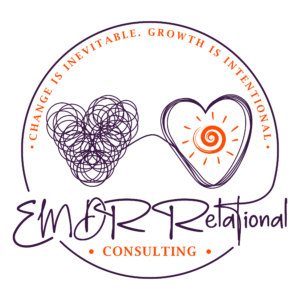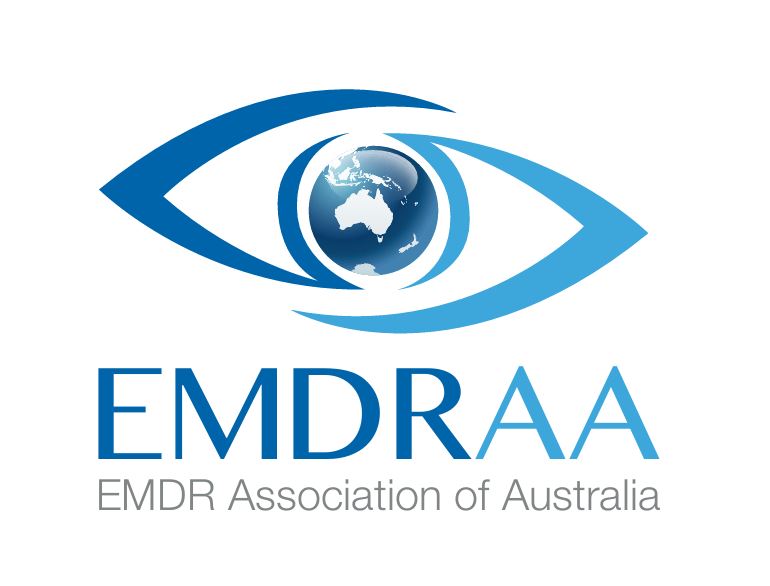EMDR & RI-EMDR (Relational Integrative EMDR)
EMDR therapy helps to reprocess and integrate memories that have not yet been resolved. When something disturbing happens and does not get fully processed, that memory is stored in isolation. In addition, all the aspects of that memory are also stored in isolation, the beliefs we hold about ourselves as a result, the emotions, the body sensations, our five-sense perception, all of that is also fragmented. EMDR can help these memories and the aspects of those memories to become integrated and to be stored in the frontal lobes (our thinking brain) rather than our limbic system (the animal or flight or fight response brain).
An area of EMDR that I am passionate about is Attachment informed EMDR. Attachment focus EMDR is as a result of Dr Laurel Parnell and her amazing work in this field and highlighting the importance of focusing on clients early developmental stories. Attachment informed EMDR developed by Mark Brayne in the UK has resulted from this amazing work and builds on both Francine Shapiro’s core EMDR model and Dr Parnell’s Attachment Focused EMDR. It provides a relational structure and tight focus on what needs to happen to help a client shift and heal. In Attachment informed EMDR we aim to identify and repair early attachment ruptures, explicitly encouraging and supporting the clients Adaptive Information Processing capacity to rework and rewire their implicit response circuits to stress. Mark takes this further with his work in Intergenerational EMDR and Dreams with EMDR
As a Clinical Resource Therapist Trainer (Advanced Ego States) I use parts work alongside EMDR. When a person has unresolved trauma, or loss, they are often left feeling fragmented. One part of them might long for connection, the other part keeps people at a safe distance and pushes loved ones away. Even their memories are fragmented and disjointed. This is all a very natural response to unresolved trauma, and we now know more about the brain and recovery from pain than ever before. Therapies that help work with different parts recognize that we all have different parts of ourselves that might show up at different times or under different types of stress. When a person has unresolved trauma or internal conflict, these parts of ourselves might get bigger and more at odds with one another. Doing parts work can help us resolve internal conflict and restore a sense of an empowered self.
I am also trained in Imagery Rescripting and bring this also into my work when working with resource teams, intergenerational and collective trauma and dreamwork.Imagery rescripting in EMDR involves revisiting and reimagining distressing memories or images in a safe and controlled environment, allowing for the integration of new, positive associations and adaptive beliefs to replace the old, maladaptive ones. Repairing ruptures in attachment where needed. The efficacy of imagery rescripting lies in its ability to reprocess traumatic experiences, shift negative cognitions, and promote emotional healing and resilience.
The amazing work of Dolores Mosquera, Anabel Gonzalez and Kathy Steele in their work with Dissociative Disorders and CPSTD also gives gifted guidance in how to work with this vulnerable population. Linda Thai in her beautiful compassionate somatic approach and the Mindell’s with their Earth Based Spiritual approach. There are so many gifted and inspirational leaders out there in the these communities that it makes this a very exciting time to be an EMDR therapist where you can integrate these beautifully.
As a result of this training and passion for AI EMDR, Resource Therapy and Polyvagal and Somatic Work alongside my colleague Amy English we have developed Relational Integrative EMDR – RI-EMDR which integrates all these approaches into our work. We have now developed training in this approach with Part 1 being the approaches of AI-EMDR, Resource therapy (Advanced Ego States) Imagery Rescripting, Polyvagal/Somatic work and Somatic Integrative Processing (SIP). Having a Breathworks session led by a Breathworks facilitator and other nature based somatic exercises. Part 2 being the approaches of Intergenerational EMDR, Introject work in Resource Therapy, Dreamwork and Spirituality. Knowing how to identify and work with OPI’s (Other Personalised Introjects) to promote healing and integration with RI-EMDR. Understanding Polyvagal Theory and Somatic responses and how the body holds intergenerational trauma and the somatic/spiritual impact. How to tap into spirituality as a source of strength and introject/spirit release. Exploring the meaningful connections between the dreaming and body experiences. Seeing these connections as a way to reveal the self and gain insight into ones personal journey helping therapists to do this work with themselves and their clients in understanding and integrating the messages and wisdom contained within their dreams.
EMDR is an integrative treatment approach and inclusion of helpful adjunct theories and therapies are therefore included in EMDR consultation.
“Trauma is what is happening inside of us as a result of what happened to us ”
Gabor Mate



